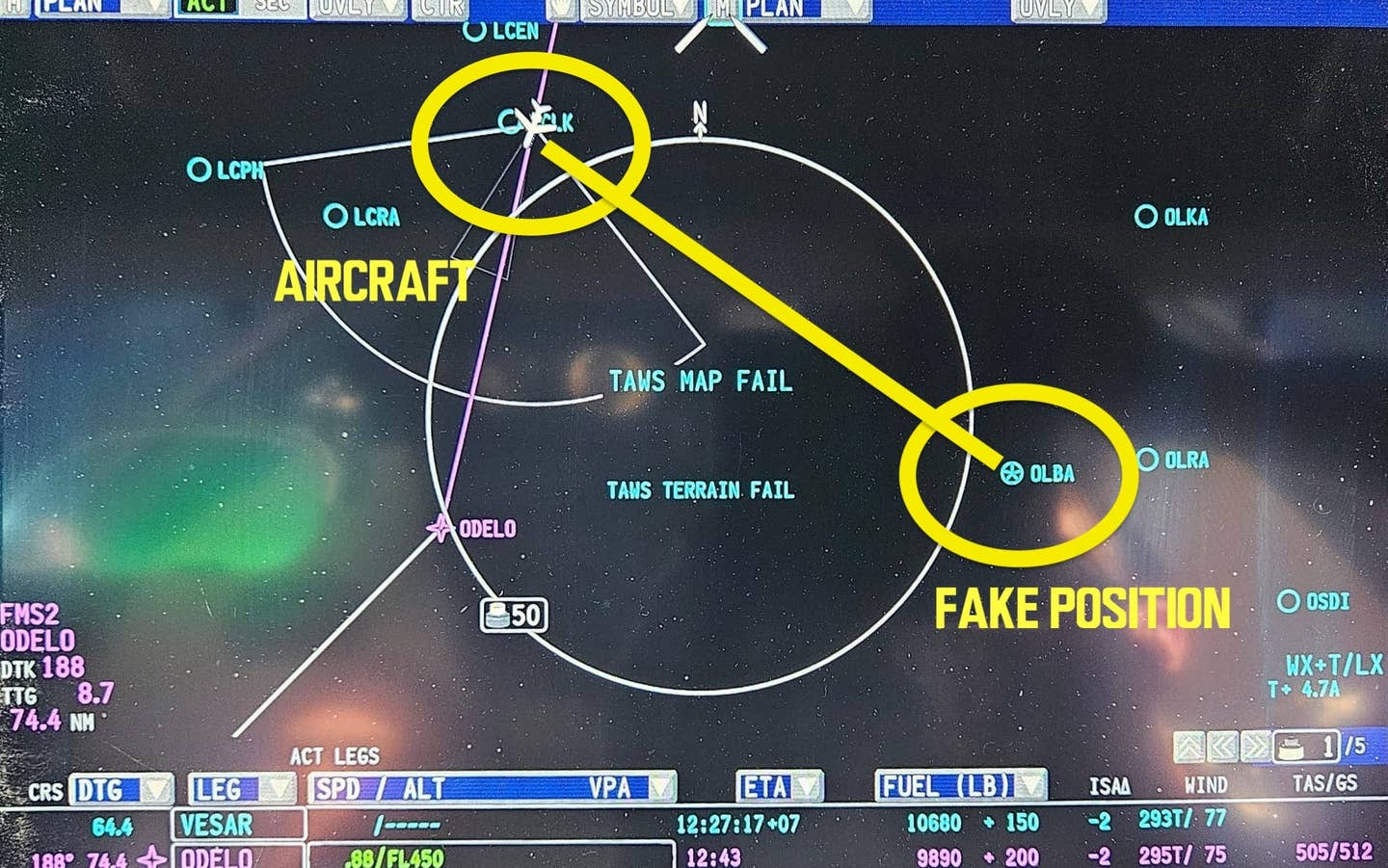GPS Spoofing Signals Traced To Tehran
A University of Texas student has traced the source of alarming GPS spoofing signals in the Middle East to the eastern outskirts of Tehran, but it would seem there is…

Photo from OPSGROUP
A University of Texas student has traced the source of alarming GPS spoofing signals in the Middle East to the eastern outskirts of Tehran, but it would seem there is little anyone can do to stop the navigation interference. Todd Humphreys, who heads up the Radionavigation Laboratory at UT, said the grad student, Zach Clements, was able to use gear on the International Space Station to scan for the bogus signals and approximate their source. He said analysis of the signals themselves suggests it's a more sophisticated form of jamming, the cruder form of which is ubiquitous in the region. "They seemed to be aimed at denial of service rather than actual deception," Humphreys told Vice. "My students and I came to realize that spoofing is the new jamming. In other words, it is being used for denial of service because it's more effective for that purpose than blunt jamming.”
Since late September, the website Ops Group has been collecting reports from pilots flying in the Middle East reporting satellite-based navigation equipment giving them false position reports. In some cases, their panels have told them they're as much as 120 miles from their actual location, prompting the FMS to react. Some crews have had to ask ATC for vectors to keep them on course. Humphreys said the alarming development is the spoofing affects both the GPS-dependent equipment and the Inertial Reference System (IRS). The two systems are supposed to operate independently and the IRS was thought to be immune to that kind of tampering. It affects the main system and their backups simultaneously. “The GPS and IRS, and their redundant backups, are the principal components of modern aircraft navigation systems,” Humphreys said. “When their readings are corrupted, the Flight Management System assumes an incorrect aircraft position, Synthetic Vision systems show the wrong context, etc." He said crews eventually figure out something is wrong and use old-fashioned tools like VOR and DME, but those are not always available and they have to call up ATC.






